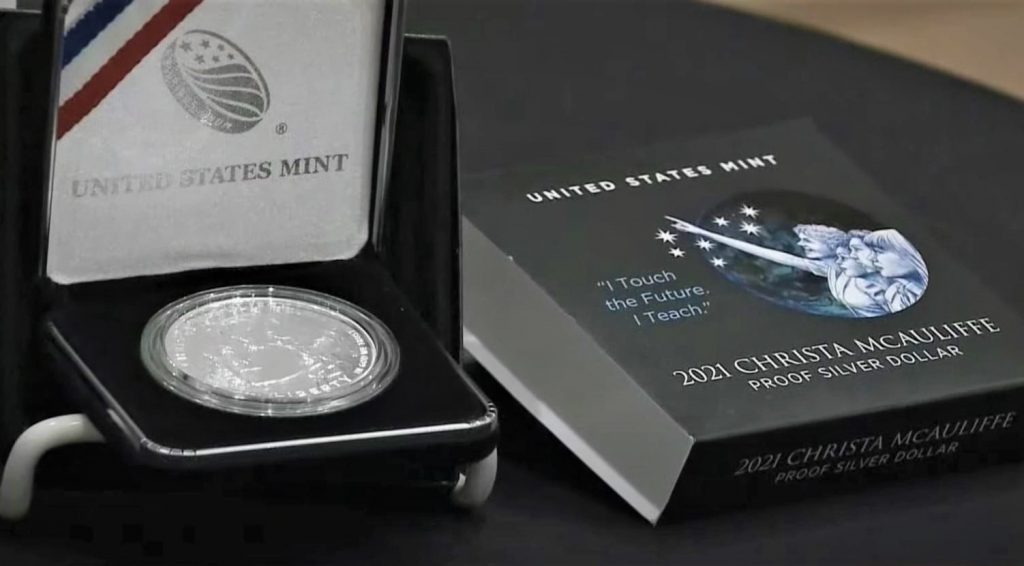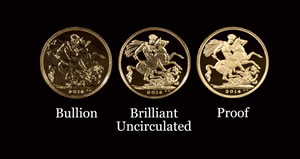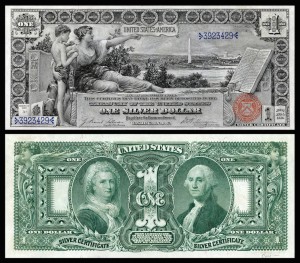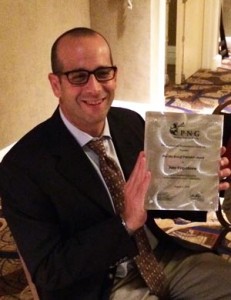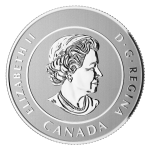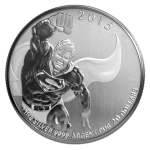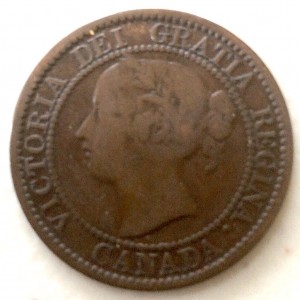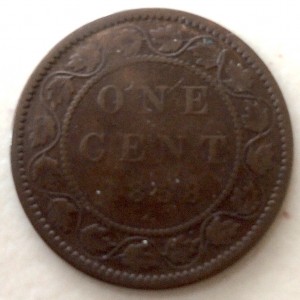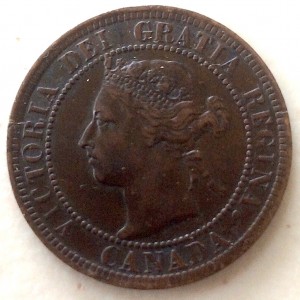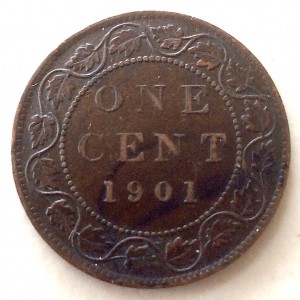First Lady Honors Christa McAuliffe
 The United States Mint released the Christa McAuliffe Proof Silver Dollar in a socially distanced ceremony where they presented the first coin to First Lady Dr. Jill Biden, honoring her lifelong dedication to teaching.
The United States Mint released the Christa McAuliffe Proof Silver Dollar in a socially distanced ceremony where they presented the first coin to First Lady Dr. Jill Biden, honoring her lifelong dedication to teaching.
NASA selected Christa McAuliffe to be the first member of the Teacher in Space Program. The space agency would train teachers to travel to space and hold lessons from the space shuttle. Unfortunately, 73 seconds into the flight, the Space Shuttle Challenger disintegrated, killing all seven members aboard.
Jill Biden began her education career as a substitute teacher in 1975. She went to school part-time to earn her Master of Education, completing her coursework while pregnant with her daughter Ashley. After a few years, Biden returned to the classroom teaching English in a public high school. In January 2007, at age 55, she earned a Doctor of Education (Ed.D.) before hitting the campaign trail for the Obama-Biden ticket.
Dr. Biden is a champion for education and plans to teach again this fall.
During the issuing ceremony, Biden said:
The coin’s sale price includes a $10 surcharge paid to the FIRST® (For Inspiration and Recognition of Science and Technology) robotics program to promote leadership in science, technology, engineering, and mathematics (STEM).
Royal Mint video show their striking standards
As part of the article and video they discuss the differences between the three types of uncirculated commemorative coin finish: Proof, Brilliant Uncirculated, and Bullion. For the Royal Mint, proof are the highest standards followed by brilliant uncirculated then bullion.
While this may be intuitive to experienced collectors, novice and new collectors may be confused by the difference. The Royal Mint does a very good job at explaining the difference in a short, well produced video. It should be interesting to the beginning and expert collector to see how another mint does their work.
POLL: What to do about currency design
The discussions have ranged from the reasoned (leave Alexander Hamilton on the $10 note because was our first Secretary of the Treasury) to the absurd (why change?) and the misogynistic that will not be repeated here.
I do not understand the the “why change” reasoning. There once was a time when there were regular changes to U.S. currency and there is no record of an uproar from the public. In 1929, the Federal Reserve reduced the size of the note from 7.375 x 3.125 inches to their present size of 6.14 x 2.61 inches. The change from Silver Certificates to Federal Reserve Notes and the color of the seals not withstanding, the designs have remained relatively the same since 1929.
According to Q. David Bowers and David M. Sundman in their book 100 Greatest American Currency Notes, the only small-sized currency notes in the list are:
Of this list, only two notes were issued for general circulation and those were emergency issues because of World War II. The others are high denomination notes not usually circulated for the general public. After all, carrying around a $1,000 note will be equivalent to carrying around $13,914.91 (according to the Bureau of Labor Statistics).
United States currency used to be beautiful. There was a regality in its design that represented the nation. Even the Education Notes from the Series of 1896 Silver Certificates were phenomenal in their design and artwork. Today’s note, while secure, do not compare to their past counterparts.
Let’s see if we can figure out what the best way forward.
What should the Treasury do about currency design?
Total Voters: 29
Leave any comments below!
What’s next for The Greysheet
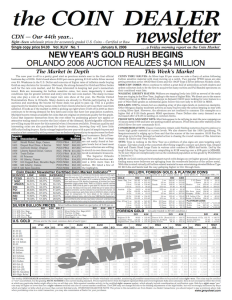 Earlier this year, Shane Downing, editor and publisher of the Coin Dealer Newsletter, better known and “The Greysheet” died of colon cancer on Jun 18, 2015. Shane became publisher following the death of his father, Ron Downing, in 1997.
Earlier this year, Shane Downing, editor and publisher of the Coin Dealer Newsletter, better known and “The Greysheet” died of colon cancer on Jun 18, 2015. Shane became publisher following the death of his father, Ron Downing, in 1997.
The Downings have been running The Greysheet since 1884 when Ron and Shane’s grandmother Pauline Miladin purchase the publication from its original owners.
The Downings expanded the publication to include quarterly supplements, The Currency Dealer Newsletter (Greensheet) for currency, Certified Coin Dealer Newsletter (Bluesheet) for certified coins, and special monthly supplements highlighting specific coins. In recent years, CDN has been available online as a PDF file in a program they call CDNi.
Early last month it was announced that an ownership group led by John Fiegenbaum, formerly president of David Lawrence Rare Coins (DLRC), has purchased CDN Publishing. The ownership group includes Steve Halprin and Steve Ivy, co-founders of Heritage Auctions; Mark Salzberg, Chairman of Numismatic Guaranty Corporation; Steve Eichenbaum, CEO of the Certified Collectibles Group, the parent company of NGC. Fiegenbaum has retired from DLRC to dedicate his time to running CDN with the assurance that CDN will remain an independent entity. The other owners will remain in their current positions.
Stressing the continued independence of CDN, the press release stressed that the publications will include greater focus on new grading standards including plus grading and the impact of CAC.CDN will be moving from California to the east coast. Although the press release does not specify the location, it is likely that CDN will be located in Virginia Beach, Virginia where Fiegenbaum has been running DLRC for over 30 years.
One of the benefits of Fiegenbaum running CDN would be to improve online access to their publications. Under Fiegenbaum, DLRC has moved from mail and phone bid auctions to a successful online auction system. Their auction website is very user friendly and getting better as they receive feedback from users. DLRC’s website rivals that of Heritage Auctions, led by Halprin and Ivy, for ease of use and accessibility to the auction items. This is a powerful backing for better electronic access.
Using the resources of NGC and Heritage Auctions, CDN could produce an online almanac of coinage including history and prices that would rival anything currently available. Making it accessible to collectors and dealers on both a free and paid basis could keep CDN viable for many years to come. Such a service could even surpass the every-ten-year effort by CoinWorld and the multi-volume effort by Whitman Publishing.
While running DLRC, Feigenbaum has shown how embracing the Internet could benefit his company and the collecting community. If he can embrace electronic publishing by bringing existing resources to the Internet and look for expansion with specialty collectors, CDN could become the go-to resource for people interested in learning all about their collections by making it more accessible to the emerging market of Gen X’ers and Millennials. That would benefit the numismatic community more than phonebook sized volumes of dead trees or glossy pages with pretty red covers.
Image of John Feigenbaum courtesy of David Lawrence Rare Coins.
$20 for $15.41
The advantage to directly buying coins from the RCM is that the exchange rate is very favorable for us Yanks. At the time of writing, C$1 is worth about 77-cents in U.S. currency making a C$20 purchase about $15.41 in the U.S. Another advantage of purchasing coins from the RCM than a dealer is avoiding the dealer markup. One U.S.-based dealer is selling the current $20 Bugs Bunny silver coin for $19.95 in U.S. currency.
For U.S. buyers who use credit cards to purchase coins on the RCM website, while your credit card will be charged in Canadian funds, your bank will charge you a conversion fee. Conversion fees are different between financial institutions and you should consult them for their rates.
Are these coins really a good deal?RCM’s $20 for $20 coins struck using 7.96 grams of silver. At 27 millimeters, it is comparable in size to the Canadian half-dollar (27.13 millimeters) and smaller than the U.S. half-dollar (30.61 millimeters). While a nice size, a coin containing 7.96 grams of silver is a little more than one-quarter of a troy ounce of the metal. With the cost of silver $15.92 per troy ounce (and the time of writing), the coin only contains $4.07 worth of silver ($5.25 in Canadian funds).
To put it another way, the silver value of the coin is 75-percent of its cost or 400-percent over its melt value!
Although the Bugs Bunny coin probably requires a licensing fee to be paid to Warner Brothers, the owner of the famous rabbit’s copyright, not all of the coins use copyright images. Even with production and packaging costs, are these coins worth the extra premium?Questioning the program’s worth aside, both the Bugs Bunny and Superman coins are very cool designs. Aside from being engraved coins (not colored pictures) and struck as specimen coins (similar to the U.S. Mint’s enhanced uncirculated strikes), it is just plain fun to have coins with the image of childhood interests.
For a little more than $30 including fees and shipping, I can get two silver coins with iconic designs. It is not about collecting for value. It is collecting for fun!
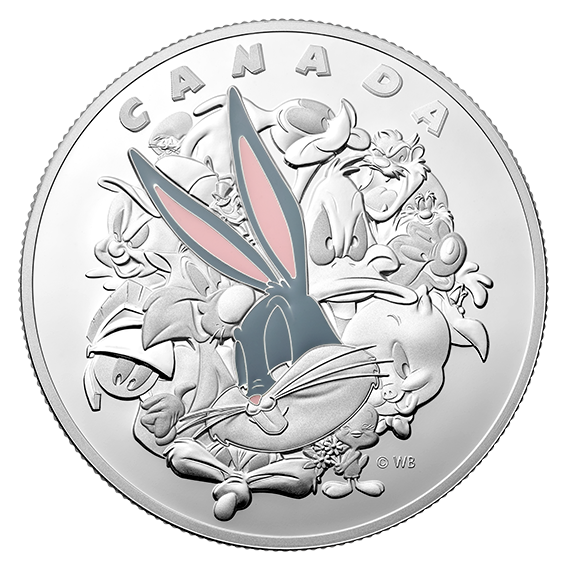
Weighing in at 1 kilogram of fine .999 silver, this enameled proof coin is does not cost $20! With a $250 face value, the Royal Canadian Mint is selling this coin for $2,350.95
($1,810.80 in the U.S. at the current exchange rate)
Catching up by starting a new collection
It has been a very interesting few weeks since my last post. During that time there was a lot of business activity that I hope will allow be to have more time to do some of the things I would rather be doing, like write. Aside from the blog, I have 95-percent of a collecting-related ebook completed and 80-percent of a different sort of book completed. In between business meetings, I was able to start a book I am tentatively calling “Why did the Mint do that?” which may include information about why the Bureau of Engraving and Printing does what it does including a section on the history of counterfeit detection in the United States.
In the mean time, I have started several posts in the same style that I have been writing for the last few years. Until I can make more time, some long-form tomes will have to wait. Instead of taking the time to write longer items, I will look to write shorter posts including in multiple parts, depending on the topic. This way, I can clear the list of ideas I have been saving.
One more bit of housekeeping before I talk about my new collection: you might see a page that says that I am working on an update. I decided that the blog needs a new look and that periodically, I will work on a theme change. Hopefully, I can finish by the end of the month, but you never know!
That being said, I also had taken the time to start a new collection. While I wanted to start something new for a while and had an idea for a direction, I did not have the opportunity until now.
Earlier this month I attended a local coin show in Westminster, Maryland. Westminster could be considered a distant suburb of Baltimore with a big firehall that housed this show. Although I was there to man the front table representing the Maryland State Numismatic Association as its president greeting people, I was able to slip inside to look around. One of the tables had binders with foreign coins and I started to look.
Grabbing the one for Canada, I remembered that the first official coinage of the Province of Canada. In 1840, the British Parliament passed the Act of Union that merged the upper and lower colonies of Canada into the single Province of Canada. As a province, Canada was able to form a more independent government, even though it was answerable to the Crown. Answering to political dissension that was building in the province, Queen Victoria named Ottawa as the province’s capital. Although the province government met in Ottawa anyway, this was a symbolic move.
One of the problems was the lack of circulating currency. Even though the monarchs loosened the rules on circulating coinage in Canada, there was a need for a larger supply. Even though the Province of Canada’s parliament passed legislation to adopt a decimal coinage, Queen Victoria finally recognized the request. As part of trying to maintain order in the province, Victoria ordered the Royal Mint to produce coinage for Canada starting in 1858.
Canadian large cents with the effigy of Queen Victoria are affectionately called Vickie Cents. With the recent elimination of the one cent coin, looking back at the Canadian cent through its history has become popular with Canadian coin collectors. The key date for Vickie Cents is the first year, 1858 coin.
At mid-grade the 1858 Vickie cent is not that expensive. Although they are harder to find, the demand keeps the price reasonable for the average collector. Although I have been thinking about starting a Vickie cent collection for a while but when I found one in this dealer’s binder, I could not resist!Based on the description in the Charlton Standard Catalog of Canadian Coins, the coin would be graded around F-12. But since it is the first year of issue and the general rule is to buy the best you can afford, this was how I was going to make my start with Vickie cents.
Since I was there I decided that even though it was not the first year of issue, I would pick up the last year of issue. Since Queen Victoria died in January 1901, that was the last year her image appeared on coins in the British Commonwealth. I picked out a nice extra fine example to mark the beginning and end of the series.
Vickie cents were produced in 1858 and 1859 with a few distinguished varieties. One notable variety is the 1858 coin-aligned reverse. At the time it was the Royal Mint’s practice to have coins aligned in what we call today “medal alignment” where the top of the obverse and reverse point in the same direction. An error at the mint created a rarer coin-aligned (tops on opposite ends) coin. In 1859 there were overstrikes, doubled numbers, alignment differences, and composition differences. If I were to look for all of the known varieties, the cost of the 1859 with a Narrow 9 made of brass (not bronze) would cost about as much as a 1914-D Lincoln cent and be much more difficult to find.
The cents of 1858-1859 were minted in enough quantity to keep the Canada stocked with cent until 1876. New portrait, and varieties, were introduced as well as a striking at the Birmingham Mint, also known as the Heaton Mint, along side the British halfpenny, which used the same planchet. Coins struck at the Heaton Mint were given the “H” mint mark.
Foreign coin collecting can be an adventure that may not be as expensive as their U.S. counterparts. If you are collecting for fun, as I am, pick a country, learn a little about the history, and pick a series to collect. I picked Canada because my wife’s family is from the Province of Québec. Not only will you find it a challenge, but the lower demand may make your endeavor more affordable.
Stay tuned for more!
